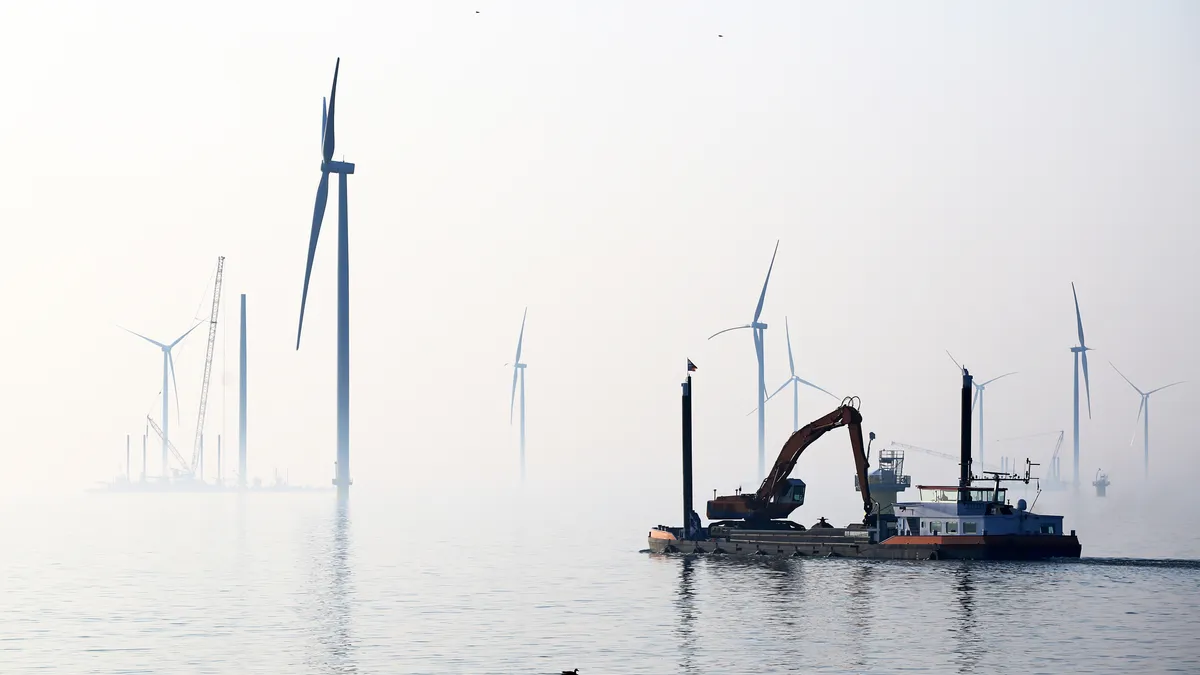Dive Brief:
- Though material costs and supply chain constraints are improving for wind turbine makers, offshore wind project developers may continue to see elevated costs for a while longer as manufacturers manage their financial risk while filling order backlogs, said BloombergNEF analyst Leo Wang.
- In a recent report for BNEF, Wang examined wind turbine prices in Europe, the U.S. and China, and found that China has seen the largest recovery from turbine cost spikes as prices “tumble to historic lows.”
- However, the Inflation Reduction Act gives the U.S. market a “very strong boost,” Wang said, along with individual state procurement goals which provide the wind energy industry with the confidence of continued demand.
Dive Insight:
“Turbines makers’ margins are gradually improving after delivering on the cheaper and less-profitable contracts in their pipeline and executing a growing number of higher-priced orders,” Wang said in his report. “As cost increases and supply chain disruptions gradually ease, turbine makers now expect to clear their low-margin-order backlog by 2024 or 2025.”
After the turbine industry delivers this “onerous” backlog, it expects to break even by 2026, according to the report.
The report also noted that one of the factors influencing China’s drop in wind turbine prices is the expiration of the country’s “generous subsidies” at the end of 2020, which has led wind developers to “pressure” turbine suppliers to cut prices.
“The global average price for [wind turbine] contracts signed in the second half of 2023 was $990,000/MW, including crane installation costs, a slight increase from the first half of the year and just 3% lower than a year earlier,” the report said. “Commodity price increases, inflation and supply chain disruptions have led to a 30% price jump compared with pre-pandemic levels.”
As a result of macroeconomic headwinds, turbine makers have increasingly been including contract clauses linking the final price of the product to certain financial indexes like steel or labor costs, Wang said.
“[Manufacturers] are becoming smarter, and can be a bit more well-protected in terms of facing the volatilities of material prices,” he said. “Right now, the industry is in a different position compared with two or three years ago, when turbine makers did not have as many protection clauses in their contracts compared with today.”
Wang said that the market will need visibility of future demand in order to keep project developers and turbine manufacturers comfortable. Recent project delays in the U.S., as well as several high-profile cancelations in the offshore wind sector, have “raised tensions” and increased uncertainty.
Offshore wind developers who have exited power purchases agreements to rebid their contracts, or canceled projects entirely, have cited issues like rising materials costs and increased interest rates — macroeconomic factors they have “no control over,” Wang said.
But those risks are starting to be better managed for project developers, as well. A recent Connecticut request for proposals for offshore wind acknowledges the financial struggles of the industry and offers developers new options for bidding contracts, allowing them to submit pricing at rates indexed to factors like inflation for adjustments of up to 15%.
Regulatory disputes over siting and permitting projects have also impacted the U.S. industry, but aren’t unique globally, Wang said. The European and Chinese markets face similar issues, and he expects these disputes will be a factor for the industry for a “long time” due to the number of potential conflicts wind farms pose both on and offshore.
“One thing I think is worth highlighting is that there are actually tremendous opportunities for floating wind – building projects further away from shore, deeper in the water,” he said. “And that's where we're most likely to be able to build more products at scale, like ten gigawatts or larger.”
Floating wind is “not quite there yet” when it comes to cost competitiveness, project economics and technological advancement, Wang said, but that “hopefully” in the next five or 10 years, the floating offshore wind market can reach scale.















